


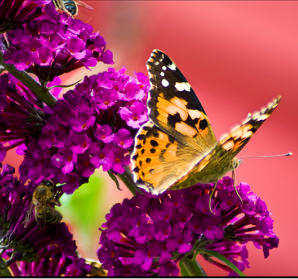








Hosta
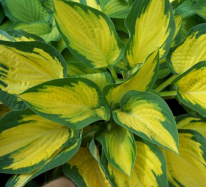
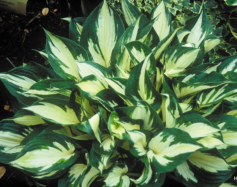
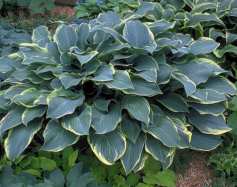
Hosta Orange Marmalade
Hosta Fire and Ice
Hosta Regal Splendor
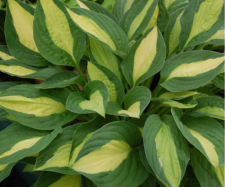
Hosta Gypsy Rose
Once your plant is established, hosta care becomes a matter of simple maintenance. To keep your growing hostas
healthy, fertilize them each spring with an all-purpose garden fertilizer. Additional summer fertilizing may be helpful, but not
necessary. Granular fertilizers should never sit on the leaves. With the exception of crown rot and leaf rot, Hosta plants
are relatively disease free. Deer find the tasty and if deer are a problem in your neighborhood, you might try planting
daffodils around your hosta to keep them away from the emerging shoots. Another difficulty in hosta care is slugs, which
leave unsightly holes in the leaves. A light scattering of sand around your plants will help keep them away. Hosta plants
are a beautiful addition to any garden and fit well in a variety of spaces, ranging from a few inches to four feet across.
Care of hostas is easy and now you’ve discovered the basics of how to grow hostas, you’ll find them a welcome addition
to your yard
Where to Plant Hostas
Hostas are generally purchased as potted plants which means they can be planted any time during the growing
season including summer and autumn as long as adequate moisture is provided. Work organic matter into the
soil at the time of planting. Hosta prefer well-drained soil that is slightly acidic, but thrive even in our alkaline
clay soil. If the hosta is root-bound in the container, tease the roots loose before planting. Use a root stimulator
solution at the time of planting to encourage root growth, then mulch to a depth of 1" to 1-1/2". Keep the soil
evenly moist for at least a couple of months or until the plant is established
Foliage Options
The range of hosta foliage color, shape, texture and size is extraordinary. Foliage colors include green, blue,
white, gold and countless unique variegated combinations. Leaf shapes include circular, oval, heart and lance
in both upright and symmetrical mounding habits. Leaf texture can be smooth, glossy, cupped, seer-suckered
or rippled. Mature plant size ranges anywhere from 2" in height and 4" in width up to 36" in height and 60" (or
more) in width. And if this range of options weren't sufficient, hosta also bloom in colors ranging from white to
lavender to purple. Some varieties are even fragrant.
With this range of choices you will find a hosta for almost every landscape situation and effect- from containers
to edging to groundcover to background planting and specimen planting. Hostas are quite effective among
other companion shade perennials and shrubs including astilbe, dicentra (bleeding heart), ferns, tiarella (foam
flower), tradescantia (spiderwort) and hydrangea
Designating any one plant the "perfect" perennial invariably provokes a lively debate among gardeners.
However for gardening in the shade, one plant stands head and shoulders above the rest. Hostas are shade-
tolerant, low maintenance, quite forgiving, incredibly elegant and, quite possibly, habit-forming. And they are
currently the most popular perennial
One of the reasons hostas are so loved is their ease of growth. Varieties range in hardiness a common
misconception is that hostas want full, or complete, shade, but this is not actually the case. Hostas will not thrive
at all in deep shade and most will do best when grown in an area with morning sun and shade in the afternoon.
Sometimes shade is a difficult place for plants to thrive. Often those areas tend to be overly moist, or too dry
due to the roots of the very trees providing the shade. Hostas will struggle with both of these conditions. Build
the soil up so your hostas are not planted in standing water, but do provide ample water (and mulch!) to hostas,
especially if planted under trees.
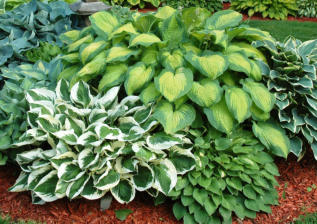
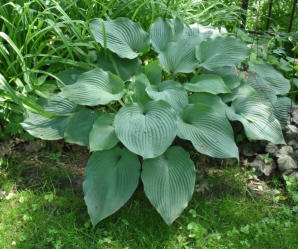
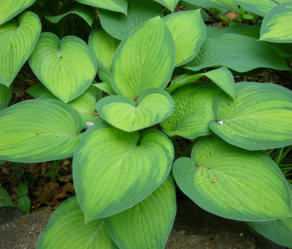
Common Name :
Hosta
Blooming Season :
May - July
Plant Habit :
Clump forming
Water :
Medium
Position :
Shade, dappled shade
Height :
6-36 inches





Alcea (Hollyhock)
Aquilegia
Buddliea
Buddliea Altternifolia
Delphinium
Dianthus (Carnations)
Echinacea
Eryngium
Geranium
Gerbera
Geum
Gypsophila
Herbs
Hosta
Iris
Kniphofia
Lantana
Leucanthemum
Lupins
Monarda
Penstemon
Peony
Phlox
Rudbeckia
Sidalcea
Sysirinchium
Tanacetum (Pyrethrum)
Thalictrum
Trollius
Verbena